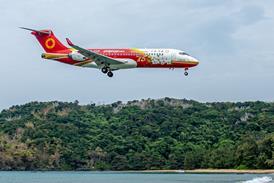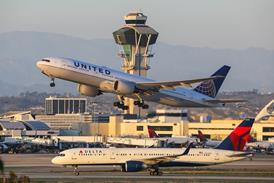VLM Airlines is not exactly a household name but under managing director Johan Vanneste it has quietly made a name for itself in
Antwerp-based VLM began serving close-in

Earlier this month VLM became the first airline at
The convenience factor, including short security and check-in queues, allows VLM to charge a premium. Thanks to a new rail link to the airport which opened one year ago businessmen can leave their offices in
“It’s still a reasonably fast airport to travel through,” Vanneste says, adding VLM’s services received a traffic boost in August after the UK terrorist scare, which persuaded even more passengers away from much busier Heathrow.
“It’s a very specialised airport. It’s a very expensive location. Specialised manpower is very expensive there,” he says. “
As it accounts for about two-thirds of VLM’s routes,
But VLM’s continued expansion is threatened by capacity constraints at the airport.
“
New plans unveiled this month by the airport’s operator will increase capacity from 2.4 to 3.5 million passengers per year in 2015. The capacity increase will be achieved by increasing the parking area, extending the current terminal and building a parallel taxiway. Currently aircraft must taxi on the runway before taking off and after landing, limiting the number of flights the airport can handle.

To increase its
VLM has received briefings on regional jets and larger turboprops which have or are expected to secure
“We like turboprops. They are much more fuel efficient. With the fuel costs these days we’ve been a lot less hard hit than jet operators,” Vanneste says.
VLM’s parent, Panta Holdings, acquired Denim in 2005. While the two carriers continue to operate independently and pursue separate niches, the two are looking to pool resources. Denim already operates four of VLM’s 19 Fokker 50s.
“Because of the different business models [Panta] wants to keep the two carriers separate but we are looking for synergies,” Vanneste says.
The two carriers have already decided to create a merged maintenance operation, which will open early in 2007 and be known as Panta Aircraft Maintenance. The maintenance unit will be in charge of maintaining Denim and VLM Fokker 50s up to B check level. Heavy C and D checks will continue to be outsourced.
“We’re bringing the maintenance arms together. Fokker 50 expertise is very scarce and we’re very experienced,” Vanneste says.
The new maintenance division will initially work out of VLM’s two
Vanneste wants to keep VLM small but with over 400 employees and 19 aircraft the carrier is poised to become one of
As SN Brussels expanded and launched long-haul operations, Vanneste missed being part of a smaller regional operation. “Personally I like smaller companies. You have an opportunity to know your staff personally.”
Source: Airline Business












































